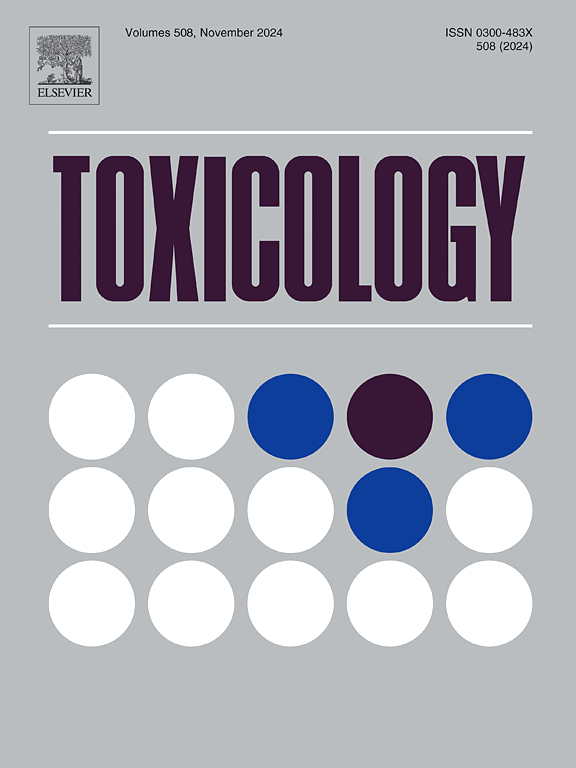Lead systemic toxicity: A persistent problem for health
IF 4.8
3区 医学
Q1 PHARMACOLOGY & PHARMACY
引用次数: 0
Abstract
Lead (Pb) has been used by humans since prehistoric times to make tools due to its malleability and durability. The Roman Empire, the Industrial Revolution, and the introduction of Pb in gasoline during the 1920s contributed to increased environmental concentrations. Pb toxicity led to its removal from gasoline after several decades. However, Pb continues to be emitted from various anthropogenic sources, including but not limited to batteries, mining, foundries, smelting, e-waste recycling, and painting. Pb remains an environmental concern, as no established safe concentration for human health has been identified. Children are more susceptible to the absorption and poisoning of Pb. Occupational exposure to Pb poses a significant risk to workers and individuals living near lead industries. The primary routes of exposure are inhalation and ingestion, and bioaccumulation and biomagnification through the food chain are major sources of human exposure. This review aims to provide an overview of Pb and its systemic toxicity of Pb, including its effects on the lungs, blood, liver, kidneys, and nervous, cardiovascular, and reproductive systems. Since Pb is classified as a probable carcinogen for humans, the article also addresses genotoxicity and cancer risk. Furthermore, it reviews the most researched mechanisms of toxicity, including calcium mimicry, oxidative stress, and inflammation, along with other less-studied mechanisms. Nevertheless, the authors emphasize the importance of exploring less examined cells, tissues, and mechanisms to deepen the understanding of Pb toxicity at various concentrations, particularly in cases of chronic low-level Pb exposure, to develop better prevention and treatment strategies for lead poisoning.
铅全身性毒性:对健康的持久问题
铅(Pb)由于其延展性和耐久性,自史前时代以来一直被人类用来制造工具。罗马帝国、工业革命以及20世纪20年代在汽油中加入铅,都导致了环境中铅浓度的增加。铅的毒性导致其在几十年后从汽油中被去除。然而,铅继续从各种人为来源排放,包括但不限于电池,采矿,铸造厂,冶炼,电子废物回收和油漆。铅仍然是一个环境问题,因为尚未确定对人类健康安全的确定浓度。儿童更容易被铅吸收和中毒。职业接触铅对居住在铅工业附近的工人和个人构成重大风险。主要的接触途径是吸入和摄入,通过食物链的生物积累和生物放大是人类接触的主要来源。本文旨在综述铅及其全身毒性,包括其对肺、血液、肝、肾、神经、心血管和生殖系统的影响。由于铅被列为人类可能的致癌物,这篇文章还讨论了遗传毒性和癌症风险。此外,它回顾了研究最多的毒性机制,包括钙模仿,氧化应激和炎症,以及其他研究较少的机制。然而,作者强调了探索较少检查的细胞、组织和机制的重要性,以加深对不同浓度铅毒性的理解,特别是在慢性低水平铅暴露的情况下,以制定更好的预防和治疗铅中毒的策略。
本文章由计算机程序翻译,如有差异,请以英文原文为准。
求助全文
约1分钟内获得全文
求助全文
来源期刊

Toxicology
医学-毒理学
CiteScore
7.80
自引率
4.40%
发文量
222
审稿时长
23 days
期刊介绍:
Toxicology is an international, peer-reviewed journal that publishes only the highest quality original scientific research and critical reviews describing hypothesis-based investigations into mechanisms of toxicity associated with exposures to xenobiotic chemicals, particularly as it relates to human health. In this respect "mechanisms" is defined on both the macro (e.g. physiological, biological, kinetic, species, sex, etc.) and molecular (genomic, transcriptomic, metabolic, etc.) scale. Emphasis is placed on findings that identify novel hazards and that can be extrapolated to exposures and mechanisms that are relevant to estimating human risk. Toxicology also publishes brief communications, personal commentaries and opinion articles, as well as concise expert reviews on contemporary topics. All research and review articles published in Toxicology are subject to rigorous peer review. Authors are asked to contact the Editor-in-Chief prior to submitting review articles or commentaries for consideration for publication in Toxicology.
 求助内容:
求助内容: 应助结果提醒方式:
应助结果提醒方式:


